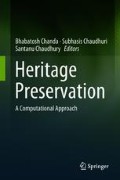Abstract
The ability to produce music is perhaps the most endearing quality in human beings. The sounds of music all over the world stand united on the 12 notes in an octave. While the physics of music and the incredible ability of human beings to perceive and reproduce notes and rhythm has been the subject of significant research spanning centuries, Indian classical music, by virtue of its system of Ragas, offers unique characteristics and opportunities to study the relation between the syntactic fabric of music and its mystical qualities. In order to be able to model and discover structures that explain the various classifications of the Ragas, an essential first step is to develop a formal model for the Ragas. The basic rules of Ragas such as Thaat, Arohana–Avarohana, etc., and Raga classification rules such as Raganga Padhati help us in building a formal model for the Ragas. Building such models help us to classify Ragas and to rate music scores based on Ragas. The goal of this research is to dive into the realms of Indian classical music with the ambition of learning the well perceived yet unexplained connections between the syntactic structure of Ragas and their effects in a multifaceted way.
Access this chapter
Tax calculation will be finalised at checkout
Purchases are for personal use only
References
Bhatkhande, V.N.: Hindustani Sangeet Paddhati, vol. 1 (1990)
Raju, M.A., Sundaram, B., Rao, P.: TANSEN: a query-by-humming based music retrieval system. In: Proceedings of the National Conference on Communications (NCC) (2003)
Belle, S., Joshi, R., Rao, P.: Raga identification by using swara intonation. J. ITC Sangeet Res. Acad. 23 (2009)
Chordia, P., Rae, A.: Raag recognition using pitch-class and pitch-class dyad distributions. In: ISMIR, pp. 431–436. Citeseer (2007)
Chordia, P.: A system for the analysis and representation of bandishes and gats using humdrum syntax. In: Proceedings of Frontiers of Research in Speech and Music Conference (2007)
Pandey, G., Mishra, C., Ipe, P.: TANSEN: a system for automatic raga identification. In: IICAI, pp. 1350–1363 (2003)
Bel, B., Kippen, J.: Modelling music with grammars: formal language representation in the Bol Processor. In: Computer Representations and Models in Music, pp. 207–238. Academic Press (1992)
Author information
Authors and Affiliations
Corresponding author
Editor information
Editors and Affiliations
Rights and permissions
Copyright information
© 2018 Springer Nature Singapore Pte Ltd.
About this chapter
Cite this chapter
Mandal, S., Chaudhuri, S., da Costa, A.A.B., Karambelkar, G., Dasgupta, P. (2018). On the Deep Structure of Ragas and Analytic Rating of Music Scores. In: Chanda, B., Chaudhuri, S., Chaudhury, S. (eds) Heritage Preservation. Springer, Singapore. https://doi.org/10.1007/978-981-10-7221-5_9
Download citation
DOI: https://doi.org/10.1007/978-981-10-7221-5_9
Published:
Publisher Name: Springer, Singapore
Print ISBN: 978-981-10-7220-8
Online ISBN: 978-981-10-7221-5
eBook Packages: Computer ScienceComputer Science (R0)

